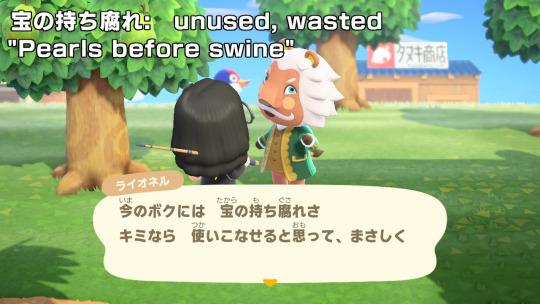#japanese studyblr
Explore tagged Tumblr posts
Text
春の単語
Vocabulary words inspired by spring (あ~ん)

あ
雨曇り あまぐもり overcast weather
稲 いね rice plant
梅暦 うめごよみ plum blossoms (as a harbinger of spring)
遠足 えんそく excursion, outing, trip (usually a school trip)
桜花 おうか cherry blossom
か
花粉症 かふんしょう hay fever, pollen allergy
帰鴈 きがん wild geese returning north in the spring
草餅 くさもち rice-flour dumplings mixed with mugwort (associated with Hinamatsuri)
毛虫 けむし hairy caterpillar; pest
事始め ことはじめ taking up a new line of work, the beginning of things
さ
山林 さんりん mountain forest
漆器 しっき lacquerware
李 すもも Japanese plum (usu. written in kana)
青春 せいしゅん youth, springtime of life, adolescence
早春 そうしゅん early spring
た
蒲公英 たんぽぽ dandelion (usu. written in kana)
地水 ちすい pond water, pond
土筆/筆頭菜 つくし fertile shoot of field horsetail (usu. written in kana)
天気雨 てんきあめ sun shower, sudden rain from a blue sky
踏青 とうせい outing in spring
な
梨 なし Japanese pear
鰊曇り にしんぐもり cloudy weather near Hokkaido during the herring season (from the third to the sixth lunar month)
布子 ぬのこ clothes padded with cotton
根分け ねわけ dividing a plant's roots for transplanting
野原 のはら field, plain, prairie, moor
は
春たけなわ はるたけなわ spring is in full swing, height of spring (esp. in April), peak of spring [oft. formulaic seasonal greeting in letters]
ひな祭り ひなまつり
藤 ふじ wisteria
遍路 へんろ pilgrimage, pilgrim
干す ほす to air, to dry
ま
満開 まんかい full bloom (esp. of cherry blossom)
蜜蜂 みつばち honeybee (usu. written in kana)
虫除け むしよけ insect repellent
芽吹く めぶく to bud
桃園 ももぞの peach orchard
や
柳 やなぎ willow
雪消 ゆきげ snow melting
夜桜 よざくら evening cherry blossom viewing
ら
落花 らっか falling petals
緑草 りょくそう green grass
累日 るいじつ many days
麗日 れいじつ glorious spring day
炉塞ぎ ろふさぎ closing of the winter hearth
わ
若葉 わかば new leaves
学校を卒業する がっこうをそつぎょうする to graduate from school
入学試験 にゅうがくしけん school entrance exam
#日本語#japanese#japanese language#japanese langblr#japanese studyblr#langblr#studyblr#語彙#単語#japanese vocabulary#tokidokitokyo#tdtstudy
154 notes
·
View notes
Text



my current inspiration: studio ghibli characters working hard at what they love
#studyblr#study aesthetic#study inspo#language study#studygram#japanese studyblr#studyspo#japanese studyspo#bookblr#study notes#studio ghibli#porco rosso#the wind rises#kiki’s delivery service#anime#study motivation#anime aesthetic#typicalstudies
17K notes
·
View notes
Text
tip for improving japanese reading speed!


how about you try some カラオケ???
i've been doing this for a couple years now and i think this has single-handedly made my reading speed in japanese improve to the point of almost being as fast as it is in english (although i still struggle with kanji and katakana sometimes x_x)
to find one, i usually just search on youtube (song name) followed by either カラオケ or ニコカラ. if nobody has made a karaoke for your song of choice, then i'd otherwise search up (song name) followed by 歌詞 (kashi/lyrics) and you'll usually find them that way. i like to use the site utaten.com because they all feature furigana! be a little careful though because while its only happened to me a couple of times, there's been times where the furigana is wrong for one or two words.
i think this is a really fun way to practice especially if you love singing, like i do!! i've never seen anyone else recommend this so i hope this helps
#japanese studyblr#japanese learning#studying japanese#learning japanese#learning languages#learn japanese#studyblr#japanese studyspo#language learning#japanese reading
446 notes
·
View notes
Text
Japan Housing Websites (part one)
Want to move to Japan? Me too! Lately I’ve seen a lot of Instagram pages dedicated to showing off cheap homes in Japan. These pages usually just link back to a Japanese real estate website, so I’d like to list some handy vocabulary to help you navigate the sites and find some houses on your own!
Note: This post was made with intermediate level Japanese learners in mind. It's meant to be a vocabulary list with visual examples, not an all-inclusive house buying guide. A complete list of vocab words can be found at the end of the post. For general website navigation, I’d recommend the RikaiChan / RikaiKun extensions which will display a translation of each word you mouse over.
What Websites?
I really like SUUMO, so that will be the site I use for the example pictures. But any website will have more or less the same words!
Navigating the Website

[ 1 ] Creating an Account会員(かいいん)登録(とうろく):Member Registration
[ 2 ] Search探す(さがす):Search / Find This word will come up a lot! The search function may also appear as... 検索(けんさく):Search 物件(ぶっけん)検索:Property Search
Suumo has a nifty map on the front page. If you know the region you'd like to search in, you can choose it here.
[ 3 ] Renting 借りる(かりる):Rent (Borrow) 賃貸(ちんたい):Lease / Rent
[ 4 ] Purchasing買う(かう):Buy
[ 5 ] House Terminology If you've taken a Japanese class, you may have learned that the Japanese word for house is 家 or いえ. Unfortunately, this short and simple word isn't used much on real estate websites. The following terms are typically used instead.
一戸建て(いっこだて):Detached Building A standalone house, as opposed to an apartment or condo.
新築(しんちく)一戸建て:New Buildings
中古(ちゅうこ)一戸建て:Old Buildings 中古 can mean "old", "used", or “secondhand”, none of which sound ideal, but all it means is that the house that has been lived in previously. This is where you find the cheap ones!
Finding Houses

Once you have the region and building type selected, you’ll see a new map you can use to select the prefecture. I'll highlight a few key search methods on this screen.
[ 1 ] Search by Area(エリア)
Click on a prefecture to bring up a checklist of cities and districts. At the bottom of the list, you'll see two options: refining the search further or proceeding with the checked options.

「チェックした市区郡の町名を絞り込む」 "Narrow by town names of checked cities/wards/districts"
市区郡(しくぐん):"City Ward District" 町名(ちょうめい):Town Name 絞り込む(しぼりこむ):Narrow / Refine
「この条件で検索する」 "Search with these conditions"
条件(じょうけん):Condition / Term
The orange number shows how many total properties were found with the checked selections. Click the blue search button if you want to jump straight to the houses without refining the search.
[ 2 ] Search by Railway(沿線)or Station(駅)
Click on a prefecture to bring up a checklist of railways. At the bottom of the list, you'll see two options: refining the search further or proceeding with the checked options.

「チェックした沿線の駅を絞り込む」 "Narrow by stations of checked railways"
沿線(えんせん):Railway / Track 駅(えき):Station 絞り込む(しぼりこむ):Narrow / Refine
「この条件で検索する」 "Search with these conditions"
条件(じょうけん):Condition / Term
Once again, the orange number shows how many total properties were found with the checked selections. Click the blue search button if you want to jump straight to the houses without refining the search.
[ 3 ] Search by Map(地図、ちず) Clicking here will open up a much more detailed map that you can scroll through! Definitely the easiest option, which is why I put it last. :)
The End.
Here's the complete vocab list for ease of viewing:
会員(かいいん):Member 登録(とうろく):Registration 探す(さがす):Search / Find 検索(けんさく):Search 物件(ぶっけん)検索:Property Search 借りる(かりる):Rent (Borrow) 賃貸(ちんたい):Lease / Rent 買う(かう):Buy 一戸建て(いっこだて):Detached Building 新築(しんちく)一戸建て:New Buildings 中古(ちゅうこ)一戸建て:Old Buildings 市区郡(しくぐん):"City Ward District" 町名(ちょうめい):Town Name 沿線(えんせん):Railway / Track 駅(えき):Station 絞り込む(しぼりこむ):Narrow / Refine 条件(じょうけん):Condition / Term
#Japan#Japanese#japanese language#japanese translation#japanese langblr#japanese studyspo#japanese studyblr#japanese learning#japanese study#learning japanese#japan house#moving to japan#japanese vocabulary#日本語#日本#日本語の勉強#日本語勉強
161 notes
·
View notes
Text
Look, I knew five languages by age 19 and now I am learning like 3 more. I work as a language instructor and a consultant. If I can give language learners only one advice, this is it.
STOP LEARNING WORDS ON THEIR OWN.
You're doing yourself a disservice by learning lists of "30 words you must know!" "100 most common words!" like it literally means nothing if you cannot use those words in an appropriate context with proper grammar. So what you actually need to do is learn those words via example sentences.
Of course, sentences have more words so you may think you're learning less but you're actually learning the way to use it in context. That's what's important.
Language is about communication, which also means if you want to learn languages, you have to observe how people communicate with each other universally. Native speakers never have a list of words they know and they don't count every single new word they've learned. So why are you doing it to yourself? What native speakers do is listen to the new word, remember the context they're spoken in, and keep using that word in that context. And that's why people go "wait, you can use that word LIKE THAT?" all the time. So you, a language learner, are also allowed to do that. I'm not even saying those word lists are useless but they're the most useful AFTER you've known most of them and are trying to go over them for practice etc. Native speakers do click on those word lists to check out how many words they don't know or to remind themselves of those words or to learn some facts about each word. That should be your goal as well.
Learn sentences. Learn them in context. Do not fall into the "I must know xx amount of words or I'm a failure at language learning" trap perpetuated by bloggers or youtubers or whatever. Have fun with it!
#language learning#studyblr#langblr#100 days of productivity#chinese studyblr#japanese studyblr#korean studyblr#how to learn#learning#academia#academic#academics#language study#language#languages#study tip#study#study motivation
961 notes
·
View notes
Text
JLPT N5 - あげる
At its simplest, あげる means “to give”. At the N5 level, it’s used for giving physical things such as presents, money, water (to plants), food (to pets), etc. There is another way it can be used, but that is for a later JLPT level. For now, let’s get into ONE of the ways you can talk about giving in Japanese.
First, here is the vocabulary for this post.

【The Grammar of あげる】
Basically there are 4 parts to every あげる sentence that you should be thinking about. The first 3 are marked with particles and the last part is the verb.

Here is an example sentence:
① 【けんじは】【トムに】【腕時計を】あげた。
= As for Kenji, to Tom, a watch gave
= Kenji gave Tom a watch.
In a sentence like #1 it’s easy to see the 3 parts clearly marked with particles and then the verb at the end. Unfortunately you WILL NOT always see simple sentences like this, so let’s look at each part one by one, along with the cultural context behind あげる.
【The Giver】
Most of the time, the giver will be marked by the は (or sometimes the が) particle. This is because あげる sets up the action of giving from the giver’s perspective.
Sometimes, it is obvious who the giver is, so that phrase can be completely left out of the sentence.
② 【会社の人たちに】【お土産を】あげると思う。
= to the people at (my) company, souvenirs will give I think
= I think I’m going to give the people at my company souvenirs.
In this sentence it would be clear that the speaker is the giver. Therefore it’s not necessary to include a 私は phrase.
【The Relationship Between Giver and Receiver】
Before we move on, let’s get into a very big cultural difference between Japan and English-speaking cultures. When you use あげる, you have to think about the relationship between the giver and the receiver. In English, this doesn’t affect the words we use, but in Japanese it is actually very important when it comes to word choice. Take a look at this image:

The green circle would include close friends, family, your lover, etc. Pets and plants would also fall into this circle. Outside of the green circle are strangers, teachers, professors and depending on your job, your customers. This is because showing respect is directly connected to setting up a kind of psychological distance. You have to work hard and gain trust before you are moved into the green circle.
Some people, like coworkers and bosses, may be inside the green circle in some situations, but outside of it in other situations! A common example is when you go out drinking with coworkers. As the alcohol flows throughout the night you’ll notice that psychological space slowly disappearing - that is until the next day at work. They might act like the person you drank with was a COMPLETELY different person!
This way of thinking is called うちそと, and can be a very difficult part of Japanese culture for many foreigners. Here’s the thing: the culture of うちそと extends to the concept of giving as well.
【Giving Culture and あげる】
When it comes to giving, there are 4 situations where it’s appropriate to use the verb あげる:
① When you give something to someone inside your inner circle
② When you give something to anyone outside your inner circle
③ When someone in your inner circle gives something to someone outside your inner circle
④ When someone outside your inner circle gives something to another person outside your inner circle
Numbers 1-3 can be described as the act of giving while moving from a smaller circle to a bigger circle. Number 4 can be described as giving that doesn’t happen in your inner circle.

There are of course more possibilities when it comes to giving (and receiving). However, those situations won’t use the verb あげる!
【What Is Being Given】
In most sentences, whatever is being given is very simply marked with the を particle. However, there are times when the を particle or the positioning of what is being given will change. Take a look at these three example sentences:

Example 3a is the “default version”. The doll is marked with the を particle so we immediately know that it will be given to someone (the section manager’s wife).
For example 3b I want you to imagine that you are in a souvenir shop. You’ve bought a couple of things already, but you haven‘t decided which gifts will go to whom. All of a sudden, you see a doll that catches your eye. You immediately think to yourself, “that doll is perfect for the section manager’s wife”. Putting the item being given (that is, the doll) at the head of the sentence shows that 1) you are putting the focus of your sentence on that item and 2) there is a kind of impulsiveness to the giving. It’s kind of an instant decision.
Compare that with example 3c. Now I want you to imagine that you are in your house. You bought a bunch of dolls but you haven’t decided which one will go to whom. You pick up one of them and after some thought you say, “Ok I’ll give THIS one to the section manager’s wife.” Marking the doll with は serves to emphasize that there are several dolls, but you are highlighting one of them for a specific reason. It also shows that it WAS NOT an instant decision; some thought went into your decision.
This kind of distinction takes a really long time to understand and really “feel” but I hope that by explaining it to you now, it might stay with you somewhere deep inside your mind. You might even experiment with using sentences like 3b and 3c and surprise your Japanese friends!
【Alternative Verbs】
Lastly, let’s talk about your choice of verbs. You can actually adjust the level of “closeness” that the reader / listener feels by changing the verb that you use! あげる, あげた, あげます, あげました, etc. is used for a “default” level of closeness.
However, if the receiver is someone in a higher social position (for example a professor, a doctor, a boss, a politician, etc.) you would instead use the similar verb さしあげる. This verb actually serves to humble yourself - and thus elevates the listener / reader.
④ 【この本は】ただでさしあげます。
= as for this book, for nothing will give
= I will give you this book for free.
From this sentence you can tell that the giver and the receiver are on different levels, socially. (This is a little different than うちそと.) The listener will feel an elevated level respect simply by hearing the さしあげる verb.
On the other hand, if the receiver is someone VERY close to you, you can show that closeness by using the verb やる instead of あげる. やる is often used with pets and plants.
⑤ 【彼女は】【犬に】【えさを】やるのを忘れた。
= as for her, to (her) dog food giving forgot
= She forgot to give her dog food.
As it turns out, this is why I keep on saying “what is given” instead of “a present” or “a gift”. Giving water to plants or food to pets is not a present or a gift.
Here is a visual representation of the 3 different verbs that you can use when talking about giving (from the giver’s perspective):

Here is 1 last example:

= as for apples I give to you, there are none
= I don’t have any apples to give you.
As you can see in #6, it’s possible to state a giver, a receiver and then あげる in order to describe what is being given. Once you do that, you will then have a topic which you can then go on to make a comment about!
【Conclusion】
So there you have it! あげる and its related verbs (さしあげる and やる) all express the idea of giving from the giver’s perspective. However, you have to keep the Japanese concept of うちそと in mind. Later we’ll talk about giving but from the receiver’s perspective. Stay tuned!
Rice & Peace!
-AL (アル)
👋🏾
#日本語#japanese studyblr#japanese grammar#japanese language#isshonihongo#japanese culture#あげる#jlptn5#jlpt#japanese#learn japanese#japanese lesson#japanese study#studying japanese#japaneselessons#learnjapanese#japanese langblr#japanese vocab#japanese vocabulary#language#languages#language study#language studyblr#language blr#日本語の勉強#にほんご
90 notes
·
View notes
Text
YouTube Channels for Kids by JLPT Levels
(。•̀ᴗ-)✧ resources

こんにちは, Japanese learners! Learning a language is an exciting adventure, isn't it? To add a spark of joy to your Japanese learning journey, here's a collection of YouTube channels tailored for kids. Organized by JLPT levels, these channels offer a blend of education and entertainment for learners at different stages. Keep in mind, though, that JLPT levels aren't an exact science like math – language learning can be subjective in terms of difficulty. However, these resources provide a fantastic starting point and a fun way to explore the world of Japanese language and culture. Let's hop into this delightful world of animated learning and playful discoveries!
Friendly reminder to adjust your way of learning in order to make the most of what you're studying to reach the goal you truly want! read my post about it (ᵔ◡ᵔ)
꒰ა ˚₊ ✧・┈・╴N 5 ╴・┈・𐑺 ‧₊˚໒꒱
— Curious George (N5 level)
— Japanese folk tales/anime series (Japanese audio/Japanese subtitles) from BomBom Academy (N5 level)
— Peppa Pig (N5-4 level)
— Anpanman (N5-4 level)
— NHK education (N5-4 level)
꒰ა ˚₊ ✧・┈・╴N4 ╴・┈・𐑺 ‧₊˚໒꒱
— Cinnamon Roll, Sanrio (N4 level)
— [Anime] Atashin'chi (N4-3 level)
꒰ა ˚₊ ✧・┈・╴N3 ╴・┈・𐑺 ‧₊˚໒꒱
— Sesame Street Japan (N3 level)
— Chibi Maruko Chan (N3-2 level)
꒰ა ˚₊ ✧・┈・╴N2 ╴・┈・𐑺 ‧₊˚໒꒱
— Precure (N2 level)
またね~@inkichan
꒰ა ˚₊ ✧・┈・╴﹕꒰ ᐢ。- ༝ -。ᐢ ꒱﹕╴・┈・𐑺 ‧₊˚໒꒱
#japanese#nihongo#studyblr#learn Japanese#learning Japanese#japanese langblr#langblog#japanese studyblr#日本語#study japanese#japanese resources#free resources#resources#japanese free resources#youtube#JLPT#JLPT N5
811 notes
·
View notes
Text
部屋探し|Apartment Hunting

Let me share with you my current struggles on finding a place to stay in Japan with this long vocabulary list!
住宅(じゅうたく)housing, residential building
住宅街(じゅうたくがい)residential area
最寄り駅(もよりえき)nearest train station
共同住宅(きょうどうじゅうたく)residential complex, apartment house
不動産屋(ふどうさんや)real estate agent
物件(ぶっけん)object, property (real estate)
ネット上(じょう)on the internet
掲載する(けいさい)post, insert (advertisement)
家賃(やちん)rent
共益費(きょうえきひ)common fee, utility fee
加算する(かさん)add
月額(げつがく)monthly amount
初期費用(しょきひよう)initial costs
入居する(にゅうきょ)move into
翌月(よくげつ)next month
翌月分(よくげつぶん)next month's rent
礼金(れいきん)key money (fee paid for rental rights)
敷金(しききん)deposit
保証金(ほしょうきん)deposit
清掃費(せいそうひ)cleaning fee
火災保険料(かさいほけんりょう)fire insurance fee
内見(ないけん)viewing
賃貸(ちんたい)lease, rent
賃貸借契約(ちんたいしゃけいやく)rental contract
借り主(かりぬし)debtor, tenant
貸主(かしぬし)lender, landlord
大家さん(おおや)landlord
一時に(いちどき)at once
滞納(たいのう)falling behind (with a payment)
Moving into a Japanese property comes with high initial costs which can be broken down into numerous different fees. Unfortunately, share houses are not necessarily fully excluded from this, but it really depends on the company. I'm glad that I could take some time to work and save up money before going to Japan. The first month will be very expensive.
#語彙リスト#japanese langblr#langblr#studyblr#japanese studyblr#learning japanese#japanese vocabulary#japan#japanese#study blog#japanese language#japanese studyspo#study motivation#studyspo#study notes#vocabulary#vocabulary list#jlpt n1#nihongo#日本語#日本語の勉強#life in japan
287 notes
·
View notes
Text
i'm in this really annoying cycle of intermediate japanese where i can read but it's really slow and annoying because i don't know enough kanji, and i need to read more to learn more kanji, but i don't want to read because it's really slow and annoying etc
#japanese language#japanese langblr#japanese studyblr#langblr#for context i just passed JLPT N2 but i got a really low score#llu
372 notes
·
View notes
Text
here's a fun little thing: kanji that I keep mixing up in wanikani! (some of these may seem very different, but because in wk they are studied at the same time they get mixed up...)
他 地 他 on:ほか|kun:た = other 地 on:ち = world
海 毎 毋 海 on:かい|kun:うみ = sea 毎 on:まい|kun:ごと = every 毋 on:ぶ|kun:はは = don't
夫 未 末 末 on:まつ|kun:すえ = not yet 未 on:み|kun:いま = end
礼 札 礼 on:れい = thanks 札 on:さつ = (money) bill
通 辺 通 on:つう = pass through 辺 on:へん = side
竹 村 竹 on:たけ|kun:ちく = bamboo (radical bamboo) 村 on:そん|kun:むら = village (radical tree + ceremony)
米 来 米 on:こめ|kun:べい = rice 来 on:らい|kun:く = come
半 平 半 on:はん|kun: = half 平 on:へい|kun: たい flat
欠 次 欠 on:けつ|kun:か = lack 次 on:じ・し|kun:つ = next
孝 考 孝 on:こう= teacher 考 on:こう|kun:かんが・え = thought
also some vocabulary:
上る 上げる 上げる 上る のぼる = to go up/to climb 上げる あげる = to raise something up 上がる あがる = to go up/be raised
大文字 太字 大文字 おおもじ=Capital Letter 太字 ふとじ=bold letter
38 notes
·
View notes
Text
why cant kanji just get like... downloaded into my brain
like im just a girl. why must i learn kanji 😞
#anyone have any tips that arent like study for 4 hours a day on anki?#langblr#language#language learning#japanese langblr#japanese language#japanese studyblr
238 notes
·
View notes
Text
Compliments in Japanese
How do you give compliments in Japanese? Japanese tends to be a very 曖昧 (あいまい) or vague language, so direct compliments tend to be less common.
お世辞 おせじ compliment
誉め言葉 ほめことば compliment, praise
Here are some compliments that can be used in most situations.

Appearance・見た目
Polite 髪の毛切りましたか?似合いますね。 かみのけきりましたか?にあいますね。 Did you cut your hair? It looks good on you.
Casual 髪の毛切った?似合うよ。 かみのけきった?にあうよ。 Did you cut your hair? It looks good.
Polite そのシャツ/ワンピース/服いいですね。 そのシャツ/ワンピース/ふくいいですね。 That shirt/dress/outfit looks good.
Casual そのシャツ/ワンピース/服いいね。 そのシャツ/ワンピース/ふくいいね。 That shirt/dress/outfit looks good.
Polite いい笑顔ですね。 いいえがおですね。 You have a nice smile.
Casual いい笑顔だね。 いいえがおだね。 You have a nice smile.
Work・仕事
Polite 良くやりましたね! よくやりましたね! Good job! / Well done!
Casual 良くやったね! よくやったね! Good job! / Well done!
Polite お見事です! おみごとです! Great work! / Excellent!
Casual お見事! おみごと! Great work! / Excellent!
Polite 今日のプレゼン/スピーチ/アイディアとても良かったです。 きょうのプレゼン/スピーチ/アイディアとてもよかったです。 Today's presentation/speech/idea was very good.
Casual 今日のプレゼン/スピーチ/アイディアとても良かったよ。 きょうのプレゼン/スピーチ/アイディアとてもよかったよ。 Today's presentation/speech/idea was very good.
Skill・腕前
Polite 料理上手ですね。 りょうりじょうずですね。 You are good at cooking.
Casual 料理上手いね。 りょうりうまいね。 You are a good cook.
Polite 写真を撮るセンスがいいですね。 しゃしんをとるセンスがいいですね。 You have good photography sense.
Casual 写真を撮るセンスがいいね。 しゃしんをとるセンスがいいね。 You have good photography sense.
Polite 英語がペラペラですね。 えいごがペラペラですね。 Your English is very fluent.
Casual 英語がペラペラだね。 えいごがペラペラだね。 Your English is very fluent.
#日本語#japanese#japanese langblr#japanese studyblr#langblr#studyblr#compliments in japanese#japanese language#tokidokitokyo#tdtstudy
313 notes
·
View notes
Text


practicing some reading and some kanjis before i start lesson 4 :)
it's really cool to understand what i read even if it's just a very beginner content
#japanese#nihongo#studyblr#japanese studyblr#study#japanese langblr#langblr#japanese language#study inspo#learning japanese#mine
83 notes
·
View notes
Text
JLPT Tips and Tricks: Conquer the Exam with Confidence
The Japanese Language Proficiency Test (JLPT) is a standardized assessment of Japanese language proficiency for non-native speakers. Whether you're aiming for N5, the introductory level, or N1, the most challenging one, thorough preparation is crucial for success. Here's a comprehensive guide to help you ace your JLPT exam:
1. Understand the Test Format
Familiarize yourself with the JLPT's structure and scoring system. The test consists of three main sections: Vocabulary, Grammar & Reading, and Listening. Each section has a specific number of questions and allotted time. Knowing the format will help you manage your time effectively during the exam.
2. Set Realistic Goals and Create a Study Plan
Establish achievable goals based on your current Japanese language proficiency and the JLPT level you're targeting. Develop a realistic study plan that incorporates daily or weekly study sessions. Allocate sufficient time to cover all the necessary grammar points, vocabulary, and Kanji.
3. Gather High-Quality Learning Resources
Utilize a variety of effective learning resources to enhance your preparation, such as textbooks, online courses, language learning apps, and practice tests, choosing those that align with your learning style and preferences.
4. Practice Regularly and Consistently
Regular practice is essential for success in the JLPT. Take practice tests frequently to familiarize yourself with the question formats, timing, and scoring system. Consistent practice will help you identify areas for improvement and build your confidence. Focus on Active Learning Techniques
Active learning techniques, such as flashcards, mnemonics, and summarizing key concepts, can significantly enhance your memorization and retention of Kanji, vocabulary, and grammar rules.
Besides, immerse yourself in Japanese, surround yourself with as much Japanese as possible. Listen to Japanese music, watch Japanese movies and TV shows, and read Japanese books and articles. This exposure will improve your listening comprehension, reading skills, and overall language proficiency.
5. Stay Positive and Believe in Yourself
Maintain a positive mindset and believe in your ability to succeed in the JLPT. Your confidence and determination will play a significant role in achieving your goals.
Remember, the JLPT is a challenging but rewarding exam. With dedication, perseverance, and the right strategies, you can conquer the test and achieve your Japanese language proficiency goals.
Goodluck for guys!

#japanese#learn japanese#language#studyblr#studying#studyspo#jlpt#nihongo#japanese langblr#japanese studyblr
92 notes
·
View notes
Text

To make studying fun, I often play video games in Japanese. The other day, I found a neat idiom when an NPC gave me a gift.
宝の持ち腐れ:literally, “a treasure rotting in hand” 宝:たから、"treasure" の:"of" / possessive particle 持ち:もち、"have" or "hold" 腐れ:ぐされ、"rot"
It has the same meaning as the English phrase “pearls before swine”. Essentially, it means that something nice / valuable is being wasted on someone who does not appreciate it or use it to full potential.
Putting it all together to translate the text, we get:
今のボクには 宝の持ち腐れさ As for me right now, [it's like] pearls before swine.
キミなら 使いこなせると思って、まさしく。 If it's you, I thought [you'd be] able to make use of [it], indeed.
After saying this, he gave me a rug. Not the treasure I was hoping for!
Corrections always welcome.
#japanese#japanese translation#japanese study#japanese studyblr#japanese studyspo#日本語#日本語の勉強#翻訳練習#studying japanese#japanese learning#japanese langblr#japanese language
137 notes
·
View notes
Text
It's funny learning both japanese and chinese because in chinese when chinese learners complain about difficult words they are those that have simple strokes, about 3 or less pinyin pronunciations but have 58 different meanings and need specific usages where as in japanese, the difficult kanjis have 40 strokes like they've clawed all the way to earth from hell and have 80 different pronunciation but the meaning is pretty much the same across the words. So when I see chinese learners complain about a difficult word it's "guys, I think we should've left this word to die in classical chinese" but when japanese learners complain about a difficult word my response is either "that's just 8 radicals on top of each other. that's not hard" or "who angered a kami of kunyomi dominion, my god."
#studyblr#langblr#japanese language#chinese language#chinese langblr#japanese studyblr#chinese studyblr#don't mind the korean learners they're crying in the corner#because there's no way to differentiate hanja based advanced words that sound the same#you might think well it can't be bad but they're actively dying from the mountain of vocabs they're supposed to know#because “you can read all of them so you should know all of them” jfc
308 notes
·
View notes